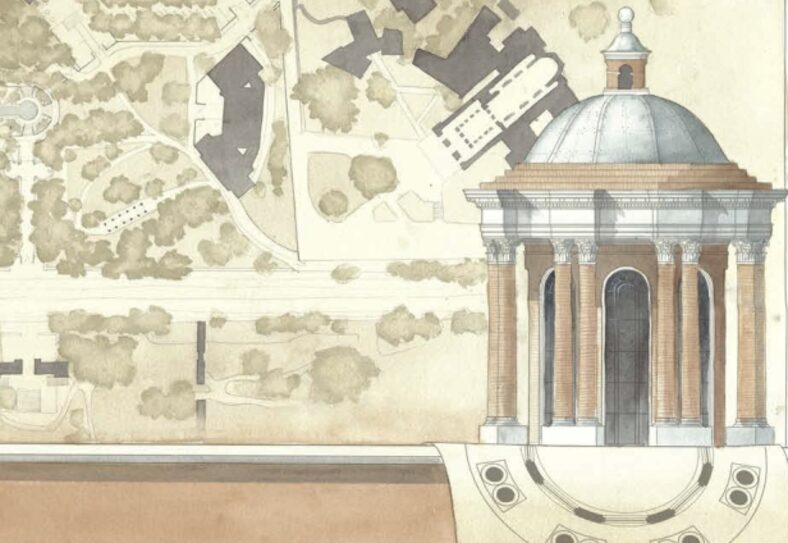“A building should reflect both the occupants that it serves and the society that it inhabits. Structures for artisans and craftspeople who contribute creatively and constructively to our society must therefore be beautiful and enduring reflections of their work — living representations of how both tradition and innovation in their craft enhances the sustainability and livability of the built world. Intertwined with a city’s unique history, this architectural narrative creates a sense of place and allows a city to grow and improve without losing touch with its identity.”
The city of Chicago has a rich history of ceramics as an art and industry that still remains a core part of its architectural identity today. Much of this industry existed along the northern branch of the Chicago River where factories like the Northwestern Terra Cotta Factory produced ceramic building materials for some of the city’s most renowned architects, like Daniel Burnham and Louis Sullivan. As this industry declined with the advent of more modern building materials and methods in the early part of the 20th century, the city lost both part of its intricate fabric as well as a part of its unique identity. Through my undergraduate thesis project titled “Terra Studios: A Center for Ceramics Production and Residency,” I imagine how a pair of buildings to serve craftspeople situated within an urban redevelopment along the North Branch of the Chicago River can begin to reestablish a connection between the city’s buildings and the people that they serve.
The first part of this process involved an extensive urban redesign along the northern branch of the river, adjacent to the historic Lathrop homes to the west and the Lincoln Park neighborhood to the south. This proposal replaces what was originally an industrial sector of the city, later redeveloped into a series of strip malls and big-box retail stores. It reimagines the area as a mixed use neighborhood that mediates the scale between the adjacent neighborhoods and the river while being walkable and blending in with the existing grid of streets. It also establishes a healthy riparian zone along the river, a natural green buffer to protect the river from the pollutants of city life.
The center for ceramics buildings act as a gateway to the river, an entirely permeable arrangement that allows a pedestrian to pass freely through a new passage under the existing elevated railroad tracks all the way to the river’s edge (illustrated in the site section above). The character of the development engages with an existing office building from the Northwestern Terra Cotta Factory, as seen on the right end of the section. The larger of the two proposed buildings serves as a center for ceramics production including a large studio, kiln room, research center, and gallery space. It also engages on a more public level by the inclusion of a large ballroom on the third floor that can be used for receptions and galas in the world of ceramics as well as rented out for private events. The entire building is intended to embody a celebration of the craft of ceramics, from the brick and clay block that structure and insulate the walls to the porcelain tile and terracotta sculpture and relief that lend to its character and beauty.
The second, smaller building on the site is intended as an artists’ residence and shop building, adding a component of living and working to the production of the ceramics. The intended result is the creation of a street that fully engages with the people that live, work, and visit the area — an area full of life and creativity that fosters a sense of community behind the craft and contributes to the city’s historic identity.
Additional models of the site (wood and 3D printed material) and building details (fired ceramic stoneware) were created to illustrate the site and building in richer detail and materality.
Many thanks to my thesis advisor, Prof. Sean Nohelty, for his invaluable insight and advice in completing this project.























